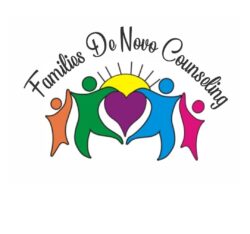As a therapist who offers bilingual therapy, I often witness the profound impact of generational trauma on individuals and families (both Spanish and English homes). These inherited patterns of pain, fear, and dysfunction can cast long shadows, shaping our beliefs, behaviors, and relationships in ways we may not even realize. But there is hope. By understanding the nature of generational trauma and engaging in conscious healing, we can break free from these limiting patterns and create a legacy of love for ourselves and future generations.

What is Generational Trauma? And How can Bilingual Therapy Help?
Generational trauma, also known as intergenerational trauma, refers to the way emotional and psychological wounds can be passed down from one generation to the next. It’s like an invisible legacy of pain that impacts families long after the original source of the trauma. This can manifest in a variety of ways, from anxiety and depression to unhealthy relationship patterns and even physical health problems.
Think of it like this: imagine a family where a grandparent experienced a traumatic event like war or displacement. Even if they don’t directly discuss their experiences, their children may unconsciously absorb their anxiety, fear, or distrust. This can then be passed on to the next generation, even though they have no direct experience of the original trauma. This is why it’s so important to understand and address generational trauma, so we can break these cycles and create a healthier future for ourselves and our families.
To learn more about the science behind generational trauma, you can check out this article from the American Psychological Association: https://www.apa.org/monitor/2019/02/legacy-trauma
Recognizing the Signs
Identifying generational trauma can be challenging, as its manifestations are often deeply ingrained in our subconscious. However, some common signs may indicate its presence:
- Recurring patterns: Do you notice similar patterns of behavior, relationship dynamics, or emotional struggles across generations in your family?
- Unexplained fears or anxieties: Do you experience intense fears or anxieties that seem disproportionate to the situation?
- Difficulty with emotional regulation: Do you struggle to manage your emotions, often feeling overwhelmed or reactive?
- Feeling disconnected from your family: Do you feel a sense of distance or estrangement from your family, even if you have close relationships with individual members?
- Repeating unhealthy relationship patterns: Do you find yourself repeating the same unhealthy patterns in your relationships, despite your best efforts to change?
Breaking the Cycle: A Journey of Healing with Bilingual Therapy
Healing generational trauma is a courageous and transformative journey that requires self-awareness, compassion, and a commitment to change. Here are some key steps to help you break free from limiting patterns and create a legacy of love:
- Acknowledge and validate the trauma: The first step towards healing is acknowledging the presence of generational trauma and validating its impact on your life. This may involve exploring your family history, talking to older relatives, or seeking professional guidance from a Spanish-speaking therapist.
- Cultivate self-compassion: Healing from trauma requires immense self-compassion. Be kind and patient with yourself as you navigate this journey. Remember, you are not responsible for the trauma you inherited, but you have the power to heal and break the cycle.
- Seek professional support: A Spanish-speaking therapist can provide a safe and supportive space to explore your experiences, identify patterns, and develop healthy coping mechanisms. They can also help you process emotions, challenge limiting beliefs, and build resilience. (As a Spanish-speaking therapist specializing in generational trauma, I am here to guide you on this journey. ¡Juntos podemos sanar!)
- Engage in inner child work: Connecting with your inner child can be a powerful way to heal from early wounds and re-parent yourself with love and compassion. This may involve journaling, visualization exercises, or engaging in creative activities that allow you to express your inner child’s needs and emotions.
- Develop healthy boundaries: Setting healthy boundaries is crucial for protecting your emotional well-being and preventing the perpetuation of unhealthy patterns. This may involve learning to say “no,” setting limits in relationships, and prioritizing your own needs.
- Practice mindfulness and self-care: Mindfulness practices, such as meditation, deep breathing, and yoga, can help you regulate your emotions, reduce stress, and cultivate a sense of presence and inner peace. Prioritizing self-care activities, such as spending time in nature, pursuing hobbies, and connecting with loved ones, can also support your healing journey.
- Rewrite your narrative: Generational trauma can shape our beliefs about ourselves, our relationships, and the world around us. By challenging these limiting beliefs and reframing your narrative, you can create a new story filled with hope, empowerment, and self-love.
- Focus on forgiveness: Forgiveness, both of yourself and others, is an essential part of healing. It doesn’t mean condoning harmful behaviors, but rather releasing the grip of resentment and anger so you can move forward with peace and compassion.
Examples of Breaking the Cycle with Bilingual Therapy
- María: Growing up in a family with a history of alcoholism, María struggled with anxiety and low self-esteem. Through therapy and self-reflection, she recognized the impact of generational trauma on her life and made a conscious decision to break the cycle. She developed healthy coping mechanisms, built strong relationships, and created a loving and stable home for her children, free from the patterns of addiction that had plagued her family for generations.
- David: David’s family had a history of emotional repression and difficulty expressing affection. As a result, he struggled with intimacy and vulnerability in his relationships. By engaging in therapy and exploring his family history, David gained a deeper understanding of the roots of his emotional patterns. He learned to communicate his needs, express his emotions, and build healthy, fulfilling relationships based on authenticity and emotional connection.
- Sofia: Sofia’s grandparents were immigrants who experienced significant hardship and discrimination. This created a legacy of fear and mistrust that was passed down through her family. Sofia, determined to heal this wound, became an advocate for social justice and dedicated her life to creating a more inclusive and equitable world. By transforming her pain into purpose, she not only healed herself but also contributed to the healing of her community and future generations.
Creating a Legacy of Love with Bilingual Therapy
Healing generational trauma is not only about breaking free from the past but also about creating a brighter future. By consciously choosing to heal, we can transform our pain into power and create a legacy of love, resilience, and emotional well-being for ourselves and generations to come. This is the true meaning of “sanación generacional.”
Remember, you are not alone on this journey. If you are ready to begin healing from generational trauma, I invite you to reach out and schedule a consultation. Together, we can explore your unique experiences, develop a personalized plan, and embark on a path towards lasting transformation.
Contact Ms. Felise Denovo, for bilingual therapy, today to begin your healing journey.
#generationaltrauma #healing #therapy #mentalhealth #family #legacy #love #sanacióngeneracional #bilingualtherapist
